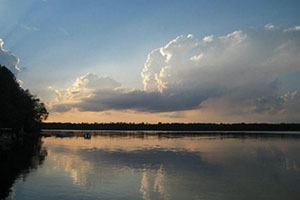The study focused on three county facilities 1) the courthouse built in 1973 and later expanded in 2012, 2) the jail which was relocated to a new building following the expansion, and 3) a smaller maintenance building built in 1975. These facilities have been supported by energy efficiency and renewable energy initiatives, including participation in Xcel Energy’s Solar Rewards program since 2017, allowing the county to purchase 165 kW of solar energy annually. Energy consumption for these facilities is tracked using the Energy Star Portfolio Manager, a tool that helps benchmark efficiency against similar buildings.
A comprehensive evaluation of the current utility consumption patterns and sustainability initiatives at the facilities was done focusing on their energy consumption and carbon emissions. The findings indicate a positive trend in energy efficiency improvements throughout these facilities, driven by
previous investments in LED lighting, improved temperature controls, improved heating efficiency, and more. The continued pursuit of similar implementations will allow the county to make progress in reducing carbon intensity by 50% by 2030 stated in the county’s CARP (County, 2024-2030). Despite significant reductions in natural gas consumption and carbon emissions at the courthouse, there has been less progress in reducing demand across all facilities. To meet the county’s ambitious 2050 carbon emissions reduction goals, further sustainable/energy efficient strategies and actions are required.
This report identifies several different energy efficient, water efficient, and transportation strategies. A key recommendation is the pursuit of LEED certification for county buildings. LEED is a sustainable building certification program that identifies key areas of sustainability for different building types. Switching county facilities to heat pumps could electrify heating and cooling systems as well as hot water heating systems. This shift combined with Xcels’ dedication to future carbon neutral energy generation the buildings could eliminate most natural gas consumption. A few options for heat pump
systems are discussed and analyzed in the recommendations section. Other energy efficient strategies touched on in the recommendation section include improving buildings’ insulation, energy efficient replacements for old windows, and the creation of a county Joint Energy Management Team. For water
management, implementing greywater recycling systems, rainwater harvesting systems, and installing low-flow fixtures are recommended. These systems will decrease municipal water use and can manage stormwater runoff. Improving stormwater management via permeable pavements, and rain
gardens/bioswales, is recommended for the site to improve water quality and reduce runoff mitigating potential pollution to nearby water bodies. Lastly, improvements to the transportation infrastructure to support electric vehicles, promote carpooling, and improve public transit access will help reduce the carbon footprint associated with commuting to these facilities. By adopting these recommendations, the county can further reduce its energy and water use and advance its sustainability objectives.
UniverCity Contact Info: UniverCityAlliance@wisc.edu
